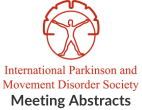Psychogenic gait disorders in children – Report of 2 cases
Objective: To present 2 cases of psychogenic gait disorder in children. Background: Psychogenic movement disorders are up to almost 5 % of patients presenting at…A case with posttraumatic functional shoulder dyskinesia
Objective: Here we report a case with posttraumatic functional shoulder movement disorder. Background: Focal posttraumatic shoulder movement disorders are seen rarely. Focal posttraumatic movement disorder…Testing for the “whack-a-mole” sign in the movement disorders clinic
Objective: We aimed to determine the sensitivity and specificity of the “whack-a-mole” sign in our movement disorders clinic population. Background: The “whack-a-mole” sign, characterized as…Comparing psychosocial risk factors in patients with functional movement disorders and patients with psychogenic non-epileptic seizures
Objective: To compare the trauma histories and psychopathological comorbidities in patients with functional (psychogenic) movements disorders (FMD) to patients with psychogenic non-epileptic seizures (PNES). Background:…Psychogenic movement disorder in cerebellar atrophy
Objective: Description of a patient with psychogenic movement disorder showing cerebellar atrophy in neuroimaging. Background: Psychogenic movement disorders are typically characterized by abnormal involuntary movements…Long term prognosis of functional motor disorders, a case-control follow-up study
Objective: To determine long term symptom outcome, quality of life, psychiatric co morbidity, work plus social adjustment and mortality of patients with a functional motor…Categories of psychogenic movement disorders to functional blepharospasm
Objective: 1) To investigate if the categories of psychogenic dystonia (PD) proposed by Gupta and Lang could be applied to psychogenic blepharospasm (PB); 2) To…
- « Previous Page
- 1
- …
- 6
- 7
- 8
